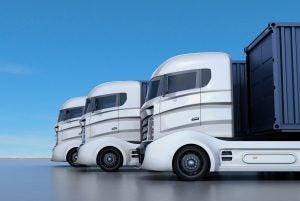IKEA tests new model for accelerating electric delivery
Consumer preference for at-home delivery is on the rise, and with it, the need for more trucks on the road. Transportation is now the leading source of greenhouse gas emissions, and trucks — though making up only less than 5% of vehicles on the road — are responsible for over half of smog pollution. And yet, corporate progress on zero-emission shipping remains slow.
Electric Vehicle Sponsorship Models are a new, innovative opportunity that companies can use today to hit their climate goals. Through this mechanism, companies can ensure their items ship on EVs, even when they don’t own or manage their own delivery vehicles.
This past spring, IKEA piloted a first-ever sponsorship model to meet its goal of 100% zero emission home deliveries by 2025. Today, a fleet of 25 electric vehicles carrying IKEA products are servicing all five boroughs of the New York City market.
Companies that have set ambitious climate goals can replicate and scale the impact of this model — and the urgency to do so is clear. Stakeholders, including investors, customers and community groups, are pressuring companies to address the climate, health and equity issues of pollution while keeping up with demands for faster deliveries.
IKEA tests new model for accelerating electric delivery Share on XThe growing risks of transportation
In the U.S. alone, the volume of delivery is expected to double by 2026 to over 100 million packages a day. Investing in zero-emission shipping enables companies to reduce their climate footprint while proactively managing against the ESG and health risks associated with increased pollution.
More than 20,000 people die prematurely every year as a result of the health burden from motor vehicle pollution on roads and highways. What’s worse, warehouses and distribution centers are often concentrated in communities of color and low-income communities. As a result, air pollution, including emissions from diesel trucks, is disproportionately concentrated in these same neighborhoods. For companies, this poses significant reputational and financial risk.
Investing in zero-emission shipping enables companies to decarbonize their carbon footprint while helping to get the global economy closer to net-zero by mid-century. It also enables companies to deploy cleaner EV trucks in communities that are disproportionately burdened by truck air pollution. But right now, a lack of commercial EV shipping services has prevented companies from adopting cleaner, more equitable solutions.
Overcoming EV barriers: IKEA spotlight
Most companies ship their goods using carriers rather than by owning their own delivery trucks. But, it’s been difficult for carriers to add electric trucks to their fleets due to a host of barriers, such as vehicle availability and the cost of charging infrastructure. As a result, companies that are interested in zero-emission shipping options haven’t been able to request that their deliveries be made by EVs.
IKEA partnered with Fluid Truck to develop the electric vehicle sponsorship model to help its carriers, and others, procure cleaner shipping options. Through the model, IKEA suppliers use EVs owned and managed by Fluid to fulfill home deliveries in the New York-New Jersey metropolitan region.
The model increases access to commercial EV shipping services, while also sending a message to the transportation supply chain, policy makers and communities that zero-emission deliveries are a priority, and that cleaner shipping options, low-cost financing programs and charging infrastructure need to be made available.
Now, we need more companies leveraging their collective purchasing power to help drive forward.
Register to hear experts from EDF, IKEA and Fluid truck discuss opportunities to engage in EV sponsorship models today.
This post originally appeared on EDF +Business’ Energy Transitions blog











